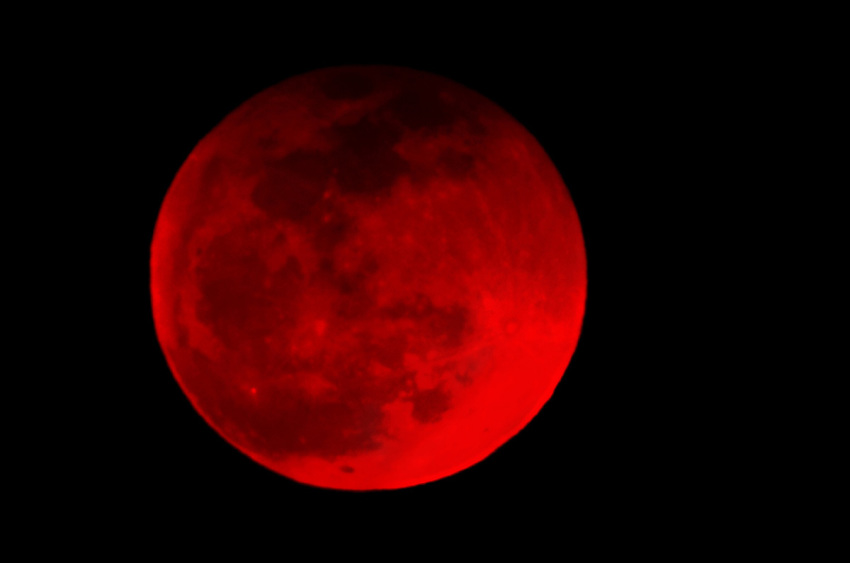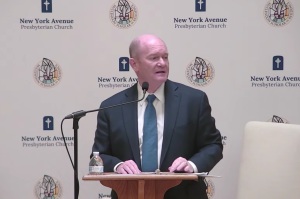Total lunar eclipse to bring 'blood moon' over US as voters head to the polls for midterm elections

The last total lunar eclipse until 2025 will occur early Tuesday morning, just hours before voters across America start heading to the polls for what could be a pivotal moment in the nation’s history.
The Nov. 8 lunar eclipse — often referred to as a “blood moon” due to the reddish hue of the moon as it falls within the umbra, the darkest part of Earth’s shadow — will be visible across North and Central America, according to NASA.
Just after 3 a.m. EST, the moon will move into what’s known as a penumbral eclipse, followed by a partial eclipse just after 4 a.m. NASA predicts the eclipse is expected to reach totality — the stage of the eclipse where the moon is entirely in Earth’s shadow — between 5:17 a.m. and 6:42 a.m.,
Skywatchers in Alaska and Hawaii will be able to see every stage of the eclipse, while Asia, Australia and New Zealand will see at least some of the show.
After Nov. 8, the next blood moon won’t occur until March 14, 2025, which will coincide with the end of Purim, when the Old Testament book of Esther is read by Jews in Israel and around the world.
The last lunar eclipse — which occurs when the Sun, Earth and moon align so that the moon passes into Earth’s shadow — took place in May during what was dubbed a “super flower blood moon.”
Scientists believe the cause of the moon’s reddish hue is due to sunlight passing through Earth’s atmosphere, where the shorter wavelengths of blue or green are filtered out and longer wavelengths like the stark reddish color punch through and are visible to the naked eye.
Tuesday’s astronomical event coincides with what many analysts believe will be a pivotal midterm election in the U.S., with a potential power shift in Congress in favor of Republicans and a number of gubernatorial races up for grabs.
While most voters might not be aware of the blood moon, for students of Bible prophecy, total lunar eclipses are more than a passing interest.
A number of prophecies in both the Old and New Testaments refer to the so-called blood moons, most notably Joel 2:31, which reads, “The sun shall be turned into darkness, and the moon into blood, before the great and terrible day of the Lord come.”
That scene is echoed in Acts 2:20, which cites the same prophecy from Joel.
Perhaps the most dramatic reference to a blood moon comes in the final book of the Bible, which foretells of an Earth-shaking event in Revelation 6:12: "And I beheld when he had opened the sixth seal, and, lo, there was a great earthquake; and the sun became black as sackcloth of hair, and the moon became as blood."
In recent years, the blood moon narrative has become something of a cottage industry among Christian prophecy fans, with the release of countless books, DVDs and even feature-length films on the topic.
A series of four consecutive blood moons — known as a tetrad — occurred between April 15, 2014, and Sept. 28, 2015, coinciding with Passover and the Feast of Tabernacles in both years.
The extremely rare event sparked rampant speculation that the End Times had arrived.
“God is shouting to us, ‘Something big is about to happen!’" wrote pastor and author John Hagee in 2014.
However, when life continued on as relatively normal following the tetrad, some commentators accused Hagee and others of exploiting the event for personal gain.
“Is it all going to stop now? The blood moons are over. The alleged Shemitah is a year gone, and now the highly dubious Jubilee year just ended. And none of the financial asteroids arrived,” wrote blogger Jerry Bowyer in 2016.
Despite the commercial hype, Jeff Zweerink, an astrophysicist and senior research scholar at Reasons to Believe, said in an emailed statement to The Christian Post that is blood moon “is simply another name for a total lunar eclipse.”
"As a rule, every year has between two and seven eclipses (of either the sun or the moon). As far as eclipses visible from North America, there will be one partial lunar and one partial solar eclipse in 2023, three partial lunar eclipses and one total solar eclipse in 2024, and two total lunar eclipses and one partial solar eclipse in 2025. So, technically it is correct that the next blood moon (total lunar eclipse) is in three years, but there will be many lunar and solar eclipses during that time."
Many Americans are tying the blood moon to Tuesday’s elections, with Republicans expected to eclipse Democrats and possibly gain a majority in Congress. Zweerink stressed, however, that there is no correlation to be made. “The fact that this particular lunar eclipse happens to align with an election day in the United States is nothing unusual. It only happened because the eclipse season happened around November this year.
Speaking to how Christians should use this event for evangelism, he added, “Christians should not try to make this an ‘omen of the times.’ Rather, the fact that eclipses occur reveal the beauty of God’s creation as well as providing tools to advance science."
“For example, a total solar eclipse in 1919 was used to verify Einstein’s newly proposed General Theory of Relativity. This theory is the most well-tested, successful theory of gravity known to scientists, and the testing scientists have done over the past 100 years provides strong evidence that the universe began — just like the Bible describes in Genesis 1.”
Ian M. Giatti is a reporter for The Christian Post. He can be reached at: ian.giatti@christianpost.com.



























